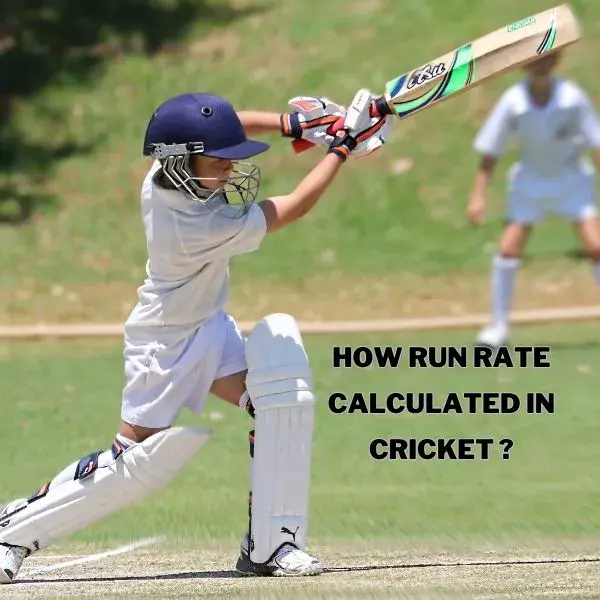Learn how to calculate net run rate in cricket with examples. This comprehensive guide provides step-by-step instructions, FAQs, and expert insights to help you understand and calculate NRR effectively.
How to Calculate Net Run Rate in Cricket with Example
Cricket, often dubbed as a game of numbers, is more than just bat and ball; it involves complex statistics that help teams assess their performance. One crucial statistic in cricket is the Calculate Net Run Rate in Cricket, Net Run Rate (NRR). NRR plays a significant role in tournaments like the Indian Premier League (IPL) and the Cricket World Cup, where it can determine a team’s position on the points table. In this article, we will delve into the details of how to calculate net run rate in cricket with examples. So, whether you are a cricket enthusiast or a budding statistician, let’s explore this essential concept.
Understanding Net Run Rate (NRR)

Before we dive into the calculations, it’s essential to grasp the concept of NRR. Net Run Rate is a statistical method used to evaluate a team’s performance based on their run-scoring ability and the ability to control their opponent’s scoring. It provides a clear picture of how leading a team has been in their matches. Calculate Net Run Rate in Cricket.
Also Read: Why Write “Bharat” on India’s Jersey in the World Cup? Virender Sehwag Revealed the Big Reason 2023
Formula for Calculating NRR | how is nrr calculated in cricket
To calculate Net Run Rate, you need to use the following formula:
NRR = (Total runs scored / Total overs faced) – (Total runs conceded / Total overs bowled)
Let’s break down this formula step by step with an example:
Example: Calculating NRR
Step 1: Calculate Total Runs Scored
First, determine the total runs scored by your team in all matches played. For this example, let’s say your team scored 800 runs in 5 matches.
Step 2: Calculate Total Overs Faced
Next, calculate the total number of overs faced by your team in those matches. Suppose your team faced 150 overs in total.
Step 3: Calculate Total Runs Conceded
Now, calculate the total runs conceded by your team’s opponents in those matches. Assume the opponents scored 750 runs against your team.
Step 4: Calculate Total Overs Bowled
Similarly, calculate the total number of overs bowled by your team. Suppose your team bowled 140 overs in these matches.
Step 5: Apply the Formula
Now, plug these values into the formula:
NRR = (800 / 150) – (750 / 140) NRR = (5.33) – (5.36) NRR ≈ -0.03
Understanding and Explanation of NRR
In our example, the calculated NRR is approximately -0.03. A positive NRR indicates that a team is scoring more runs than their opponents, while a negative NRR suggests the opposite. In this case, the team’s NRR is slightly negative, indicating that they need to improve their performance to have a positive NRR. Calculate Net Run Rate in Cricket.
What Happen if you get dismissed before 20 overs?
The net-run rate will only be determined based on a team’s scheduled overs, even if it is all out before those overs are up. For instance, Sunrisers Hyderabad were restricted to 108 runs in 18 overs at a run rate of six during the match against Royal Challengers Bangalore. Nevertheless, the Sunrisers‘ batting run rate (108 runs/20 = 5.4) will be taken into account. (Calculate Net Run Rate in Cricket).
What rules would apply if DLS were to arrive?
The net-run rate will be calculated based on the score decided after DLS rather than the actual score if a match is delayed due to weather or any other reason. In the event where Royal Challengers Bangalore scores 200 runs in 20 overs and Sunrisers’ target is lowered to 180 runs in 16 overs owing to rain, for instance, the net-run rate is also calculated using the runs achieved in the 16 overs. (Calculate Net Run Rate in Cricket).
The Significance of Mastering Net Run Rate (NRR) in Cricket
In the highly competitive world of cricket, every run counts, and NRR appears as a crucial metric that can make or break a team’s chances of advancing in tournaments. A solid understanding of how to calculate and interpret NRR can provide a strategic advantage to teams and fans alike. It not only helps teams evaluate their performance but also allows enthusiasts to engage in insightful discussions about their favourite teams. With this comprehensive guide on NRR calculation, you’ll be equipped with the knowledge to navigate the world of cricket statistics confidently.
Whether you’re a dedicated cricket follower or a team planner, mastering NRR is a winning strategy that can elevate your cricket experience to a whole new level. So, let’s dive into the details and untie the mysteries of NRR. (Calculate Net Run Rate in Cricket).
Conclusion
Understanding how to calculate net run rate in cricket with examples is essential for both cricket enthusiasts and team strategists. It allows you to assess a team’s overall performance and serves as a tiebreaker in competitive tournaments. So, the next time you follow a cricket tournament, keep an eye on the NRR to gain deeper insights into your favourite team’s journey.
Calculate Net Run Rate in Cricket FAQ
What is a Best Net Run Rate in cricket?
A good NRR in cricket is typically positive, indicating that a team is performing well and consistently outscoring their opponents. A NRR above 0.5 is considered decent, but higher values are even better.
Can NRR be negative?
Yes, NRR can be negative, which implies that a team is conceding more runs than they are scoring. This often indicates a team’s struggle in both batting and bowling, and they need to work on their performance.
How is NRR used in tournaments like the IPL?
In tournaments like the IPL, NRR is used as a tiebreaker when two or more teams have the same number of points. The team with the higher NRR usually gets the advantage in the rankings.
Is NRR more important than points in cricket tournaments?
NRR is crucial in tiebreaker situations, but points are still the primary determinant of a team’s position on the table. NRR comes into play when points are equal.
Can a team with a negative NRR qualify for the playoffs?
It’s possible for a team with a negative NRR to qualify for the playoffs, but it’s challenging. They would need to win matches convincingly to improve their NRR.
How often is NRR updated in cricket tournaments?
NRR is updated after each match in cricket tournaments to provide an accurate reflection of a team’s performance.
